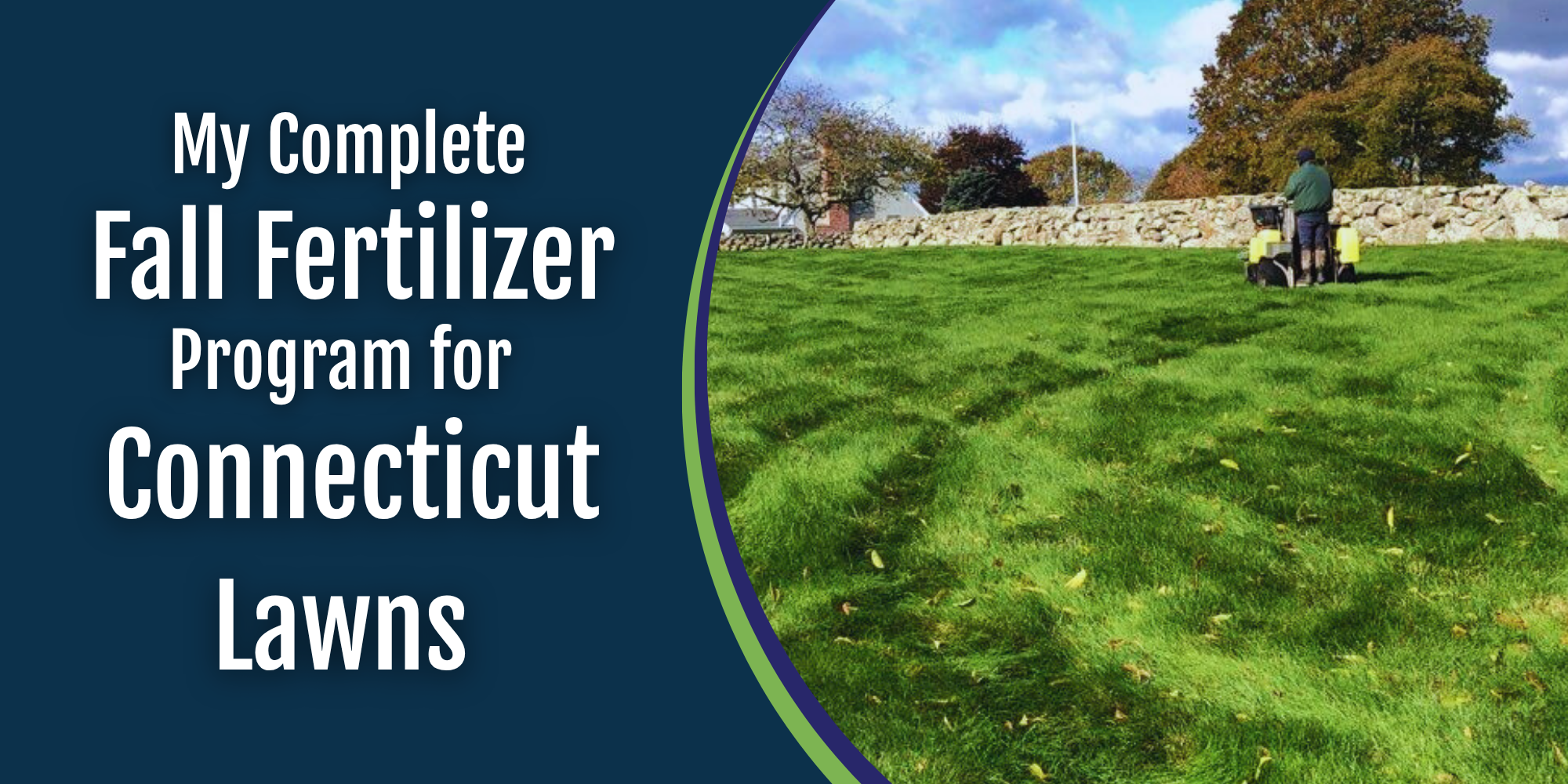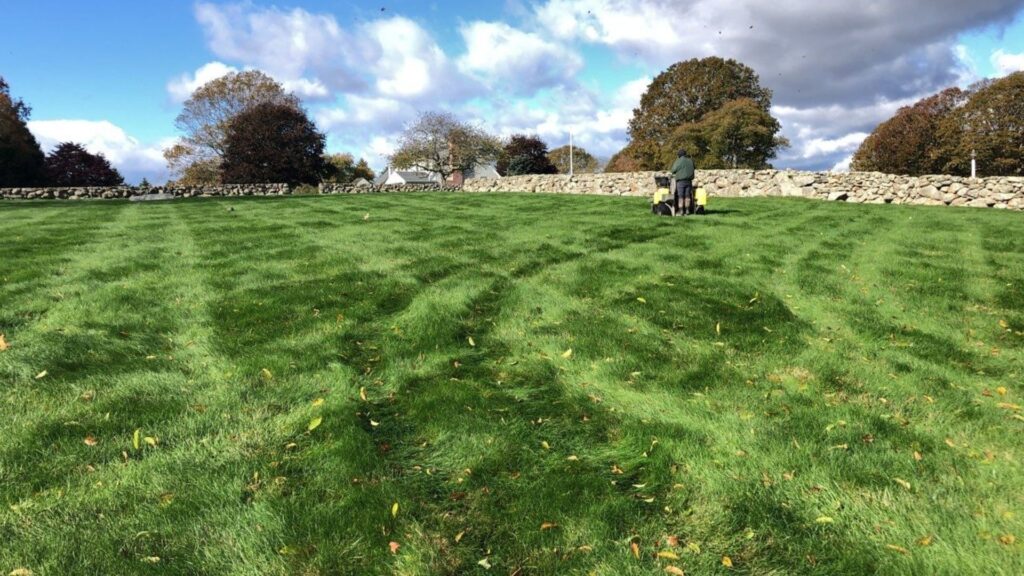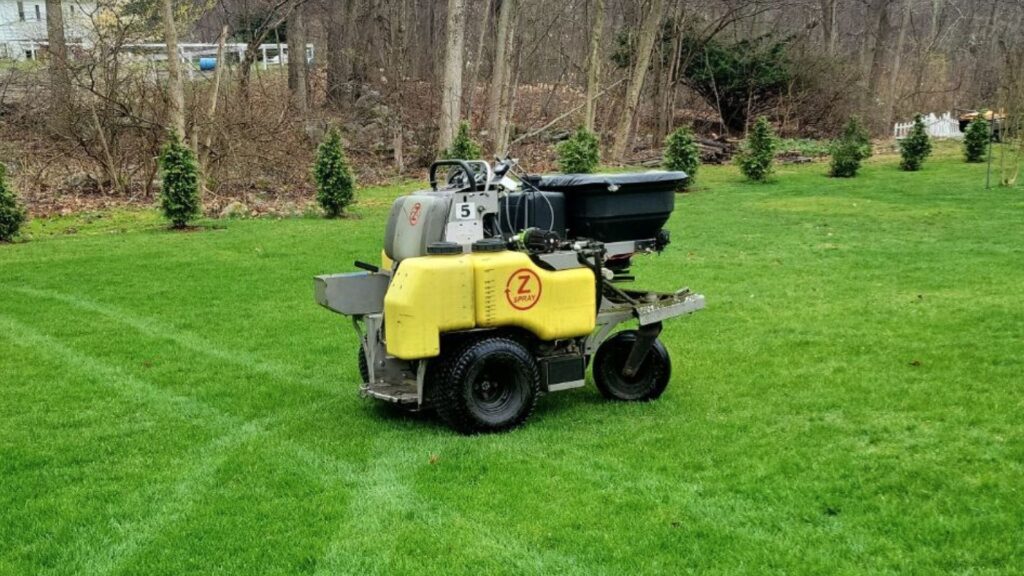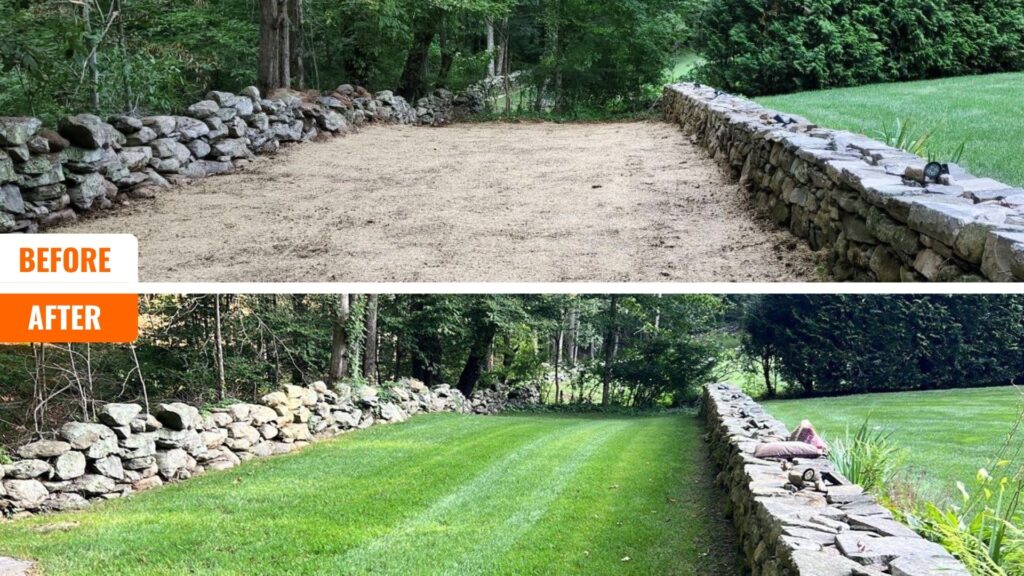
My Complete Fall Fertilizer Program for Connecticut Lawns
Hey there, I’m Steve with American Landscape & Lawn Science, and I get asked about fall fertilizer programs more than just about anything else. After 41 years working on Connecticut lawns from Madison to Norwich, I’ve learned that fall feeding is absolutely the most important thing you can do for your grass. Get this right, and you’ll see the difference all through next spring and summer.
I put together a video walking through my complete fall program – when to fertilize, what to use, and how much to apply. Whether you’re in a coastal property near Madison or inland around Norwich, this approach works because it’s based on decades of experience with Connecticut’s unique climate.
Why Fall Feeding Matters So Much for Cool-Season Grass
Here’s what I’ve learned over four decades – fall is when cool-season grass naturally wants to grow and store nutrients. We get that first peak in spring when everything comes out of dormancy, but fall gives us a second window that’s actually more important for long-term lawn health.
When you feed your lawn properly through fall, you’re building root reserves that carry the grass through winter and fuel that early spring green-up. I focus most of my annual fertilizer budget on fall because I see better results than pushing a bunch of nitrogen in spring when the grass is already growing like crazy anyway.
From our Madison location near the shore to Norwich inland, the timing varies a bit, but the principle stays the same – feed heavy in fall, go lighter in spring.

When to Start Your Fall Program
Don’t go by specific calendar dates – watch your weather and your grass. As soon as those high 80s start dropping into the upper 70s, and especially if you’re getting some rain, that’s when I apply my first fall feeding.
The grass shows you when it’s ready. You’ll notice it starting to perk up, looking less stressed than it did in July and August. That relief from summer heat is your signal to get started. For most of Connecticut, that’s usually late August or early September, but this year things ran hot longer than usual.
My First Fall Application
I start with an organic-based fertilizer for that first feeding. For years I used Milorganite, and I still recommend it when you can find it. The organic matter breaks down well in those warmer early fall temperatures, and it’s got iron that gives great color response.
This year I’ve been testing some alternatives since Milorganite has been hard to find. The key is using something with lower nitrogen – you’re easing the grass into the fall season, not shocking it with heavy feeding right away.
This first application gets things moving without pushing too much top growth when temperatures might still spike back up into the 80s.

The Standard Fall Feeding Program
After that first organic application, here’s what I recommend for most homeowners – it’s what I call the “maintenance program” for lawns that are already in decent shape:
Apply half a pound of nitrogen every two weeks
Start two weeks after your first feeding and continue every two weeks until the grass stops growing. That usually takes you from early September through mid to late October, depending on where you are in Connecticut. Coastal properties around Madison might go a bit longer since temperatures stay warmer near the water.
You’ll know the grass has stopped when you go out to mow and there’s really nothing coming out of the machine. That’s when temperatures and lack of sunlight finally shut things down for winter.
What Fertilizer to Use
I’m not going to tell you there’s only one product that works. I’ve used store-bought fertilizer on this schedule before with good results. What I will tell you is to look for fast-release nitrogen products.
There’s no point putting down fertilizer every two weeks if most of it is slow-release that won’t break down until after winter hits. You want that nitrogen available now while the grass is actively growing.
Some options that work well:
- Ammonium sulfate (21-0-0): Fast release, and it’ll help lower pH if your soil runs high like mine does
- Urea-based products: Quick release and widely available
- Store brands: Check the back label – you want minimal slow-release percentage
When you’re at the store, flip that bag over and look at the analysis. Down at the bottom it’ll tell you what percentage is slow-release. Find something with as little as possible.

Figuring Out How Much to Apply
Here’s the math, and don’t worry – it’s simpler than it looks.
Let’s say you’re using ammonium sulfate at 21-0-0, and you want to apply half a pound of nitrogen per thousand square feet:
- Take 0.5 (half pound)
- Divide by 0.21 (the 21% nitrogen)
- That equals 2.38 pounds of product per thousand square feet
If you’ve got 5,000 square feet, multiply 2.38 by 5, and that’s how much goes in your spreader.
Now, I’ll be honest – in the past I haven’t always measured things out precisely. I’ve looked at the bag rate, dialed down my spreader a few notches from their recommendation, and things worked out fine. You’re not going to hurt anything being a bit under the half-pound target.
Most store fertilizers recommend higher rates than we’re shooting for, so just dial your spreader down from their suggested setting. As long as you’re not going over a pound of nitrogen, you’re in safe territory.
The Aggressive Program for Quick Results
If you just bought a house with a neglected lawn, or you’re trying to make serious progress this year, you can push harder. Instead of half a pound every two weeks, go with half a pound every week through September and October.
This gets you closer to four pounds of total nitrogen for fall instead of the two to two-and-a-half pounds from the standard program.
Fair warning though – you’re going to mow. A lot. We’re talking two to three times a week, maybe even every other day if you can manage it. That heavy feeding pushes serious growth, and you need to keep up with it or you’ll be in trouble.
I don’t do this on my own lawn anymore because after years of proper feeding, I’ve built up enough soil health that I don’t need to push that hard. But when you’re starting from scratch or recovering from years of neglect, this aggressive approach can make a huge difference in one season.
The Final Winterizer Application
There’s been a lot of discussion about winterizer apps over the years, and here’s what I’ve found works: Once the grass completely stops growing – I’m talking when temperatures are consistently in the upper 40s for highs – I put down one final application.
This needs to be watered in, so time it with rain if you can, or plan to drag out the hoses. The idea is that even though the grass isn’t growing above ground, the roots are still taking in nutrients and storing them for spring.
In my experience, lawns that get this final feeding green up noticeably faster in spring than ones that don’t. Whether you do a full pound or dial it back to half a pound like I’ve been doing lately, it makes a difference.

A Few Extras That Help
Beyond fertilizer, I’ve been using some soil amendments the past few years that I think make a real difference:
Humic and fulvic acids help improve nutrient availability in the soil. I apply these a couple times through fall.
Sea kelp products add micronutrients and help with stress tolerance. Not required, but I’ve seen good results.
Soil looseners are great coming out of summer when the soil tends to be compacted and dry. They help water penetrate better so your fertilizer applications are more effective.
Are these necessary? No. Will fertilizer alone get you great results? Absolutely. I went years with just a solid fertilizer program before I started adding these extras. But if you want to take things to the next level, they’re worth considering.
What This Program Will Do for Your Lawn
I’ve been using this fall-focused approach since the early days of my business in 1983. The difference it makes is dramatic – I’m talking going from struggling, thin turf to thick, healthy grass that naturally crowds out weeds.
The key is consistency. Do this program properly for a couple of years, and you’ll notice you need less work in spring. The grass comes out of winter stronger, greens up faster, and handles summer stress better because you built those root reserves through fall feeding.
Don’t Overthink It – Just Start
Look, there are a lot of different approaches out there, and many of them work. But after four decades serving Connecticut properties, I know this program delivers results because I’ve seen it happen thousands of times.
You don’t need fancy products or complicated schedules. You need:
- Consistent applications through fall
- Appropriate nitrogen rates for your situation
- Proper timing based on when your grass is actively growing
Get those basics right, and the lawn takes care of the rest.
Ready to Get Your Fall Program Dialed In?
If you want help getting this right – whether it’s soil testing to know exactly what your lawn needs, professionally timed applications, or just advice on products and rates – we’ve been serving Connecticut properties since 1983.
We work with the University of Connecticut soil testing labs to take the guesswork out of fertilizer programs. Every property gets a customized plan based on actual soil chemistry, not generic recommendations.
Here’s What We Provide:
- Complete soil analysis through UConn labs
- Customized fall fertilizer program based on your soil’s specific needs
- Water-based treatments that are safe for families and pets
- Properly timed applications for maximum results
- Local expertise from coastal Madison to inland Norwich
Give us a call or visit lawnscience.com to schedule your fall consultation. We’ll test your soil, evaluate your lawn’s current condition, and put together a program that makes sense for your property and budget.
We serve properties throughout eastern Connecticut from our Madison and Norwich locations. Over 3,000 satisfied customers trust us because we understand local conditions and back everything with science-based soil testing.
The bottom line? Fall feeding is the single most important thing you can do for your lawn. Whether you tackle it yourself or have us handle it, don’t let this window close without getting it done. Your spring lawn will thank you.

